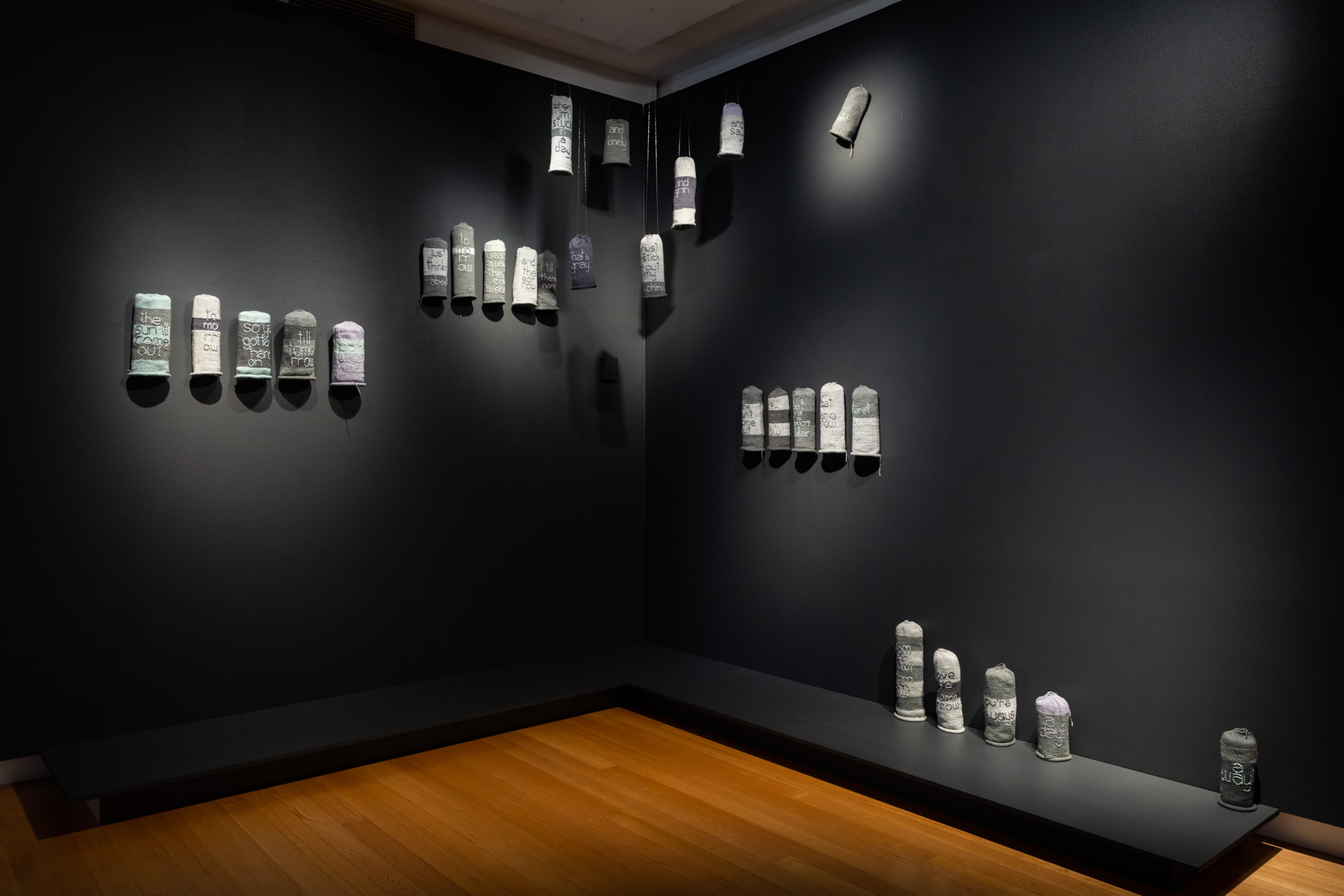
Troy-Anthony BAYLIS Tomorrow 2009, knitted and embroidered acrylic. Courtesy of the artist.
Tomorrow by Troy-Anthony Baylis, 2009.
This artwork is comprised of 27 knitted and embroidered acrylic cylindrical sculptures variable in size and dimension averaging 12 centimetres width and up to 30 centimetres in height. The work is entitled, Tomorrow and was first shown in the group exhibition, Just Can’t Get Enough at Linden Centre for Contemporary Arts, Melbourne.
This work is displayed on two walls one in front and the wall on the right. Measuring from the floor approximately 1.4 metres up the wall is the first row of five sculptures. The next grouping is displayed on the right slightly higher up the wall. The next six are hanging in the corner, from the ceiling, at different heights. On the right-hand wall near the top and close to the sculptures hanging from the ceiling is a singular sculpture angled towards the right. Directly below this sculpture, at approximately 1.2 metres in height are five more knitted sculptures in a row and the last five are positioned on a plinth low to the ground.
Each of the knitted sculptures resembles a cylindrical bag standing upright and drawn closed together at its top with string. The acrylic material is rolled up upon itself at the base of each object. Although the yarn used varies in hue across the sculptures all the colours utilised are muted and drab, dirty greys and pinks, army green and off white. The first is stripped grey and light blue and embroidered with the lowercase words in white, ‘the sun’ll come out’. The second is embroidered tomorrow with the text broken up into groupings of two letters per line, to, mo, rr, ow running from top to bottom down the length of the object. The third, fourth and fifth sculptures from left to right are more squat in shape and size, the third features the text, ‘so ya gotta hang on’ the fourth ‘till tomorrow’ and the fifth knitted in lavender with a pale blue stripe, ‘come what may.’ Displayed in the corner of the room, the exhibition design and installation’s materiality mirrors the repetitive nature of knitting and craft and the same too of the song one can’t get out of one’s head.
The artist described the work as follows, “Tomorrow is twenty-seven knitted objects that reference the form and purpose of the Aboriginal artefact known as the dilly bag. Dilly bags are generally woven from plant fibres and used for carrying food or other items around the neck of a human body. My dillies carry text messages instead of foodstuff, and they stand as sculpture rather than neck jewellery. They are embroidered with the song lyrics of Tomorrow from the musical film Annie (1977). The song speaks of hope in a world of sadness and chaos and is contrasted by my dull, possibly morbid, choice of grey as the song lyrics state ‘stuck in a day, that’s grey and lonely’ tones.”

